Dyeing, Printing & Shopping in India!
Posted by Claire on 11th Dec 2019
On one of the hottest days of our trip, we visited an organic indigo grower & dyer outside Jaipur, to learn how the plants is used for dyeing & the different techniques you can use. These were the plants we'd already seen growing naturally on the roadside, without knowing what they were! So it's not a plant that needs a lot of cultivation, but it does need quite a bit of sun, so it's not often grown in the UK, with much success!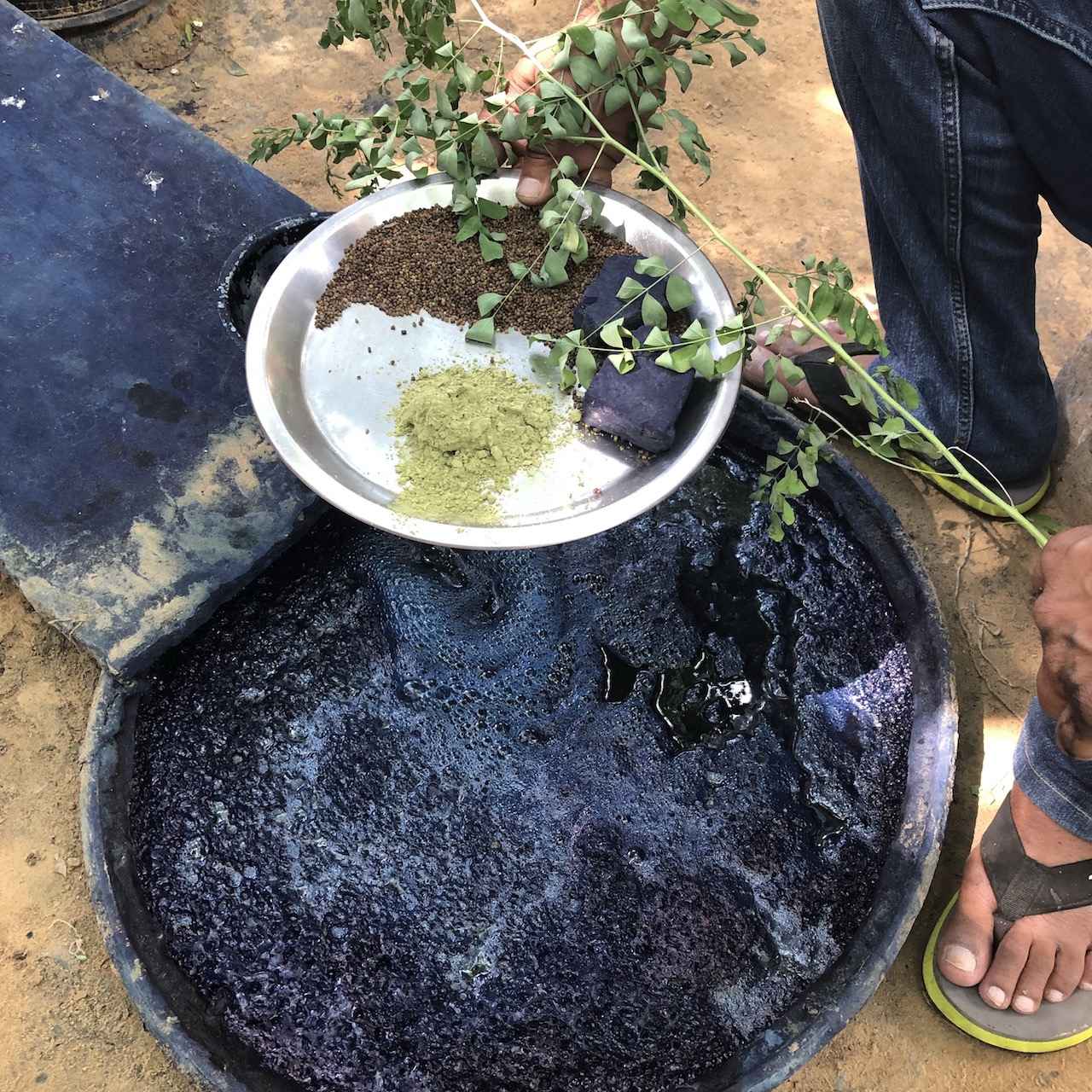
As you can see above, only the top of the plant is harvested at one time, so it can be reharvested a couple more times in the year. It self seeds easily & can be used to produce indigo cakes, a concentrated form of the dye, which is easier to store & transport. Unfortunately, even with this easy cultivation, most indigo dye used in the world, is produced with a Chinese synthetic indigo, which is a pollutant. Once the plant has been steeped in the dye pits and produces this flower on the surface, the resulting liquid is a self fixing indigo dye. Natural indigo doesn't need a mordant, unlike it's synthetic counterpart.
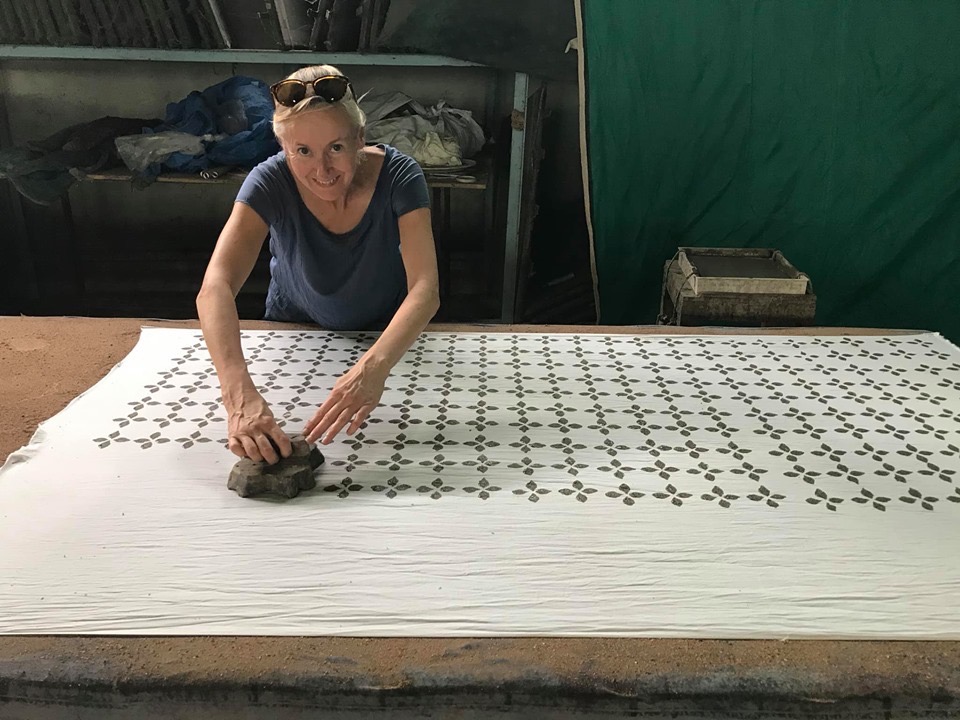
Using wooden printing blocks and a mud/gum paste, we practiced the ancient art of Dabu resist printing. Over a large piece of cotton, it's tricky to keep the print vertically & horizontally even. I was asked if I'd done it before, but I think it was beginners luck & my long arms! Once the mud is printed on the fabric & sprinkled with sawdust powder it's left to dry and in those temperatures, it didn't take long! The fabric is then submerged in the indigo dye pit & just like batik, the mud resists the dye, and just dyes the non mud covered areas.
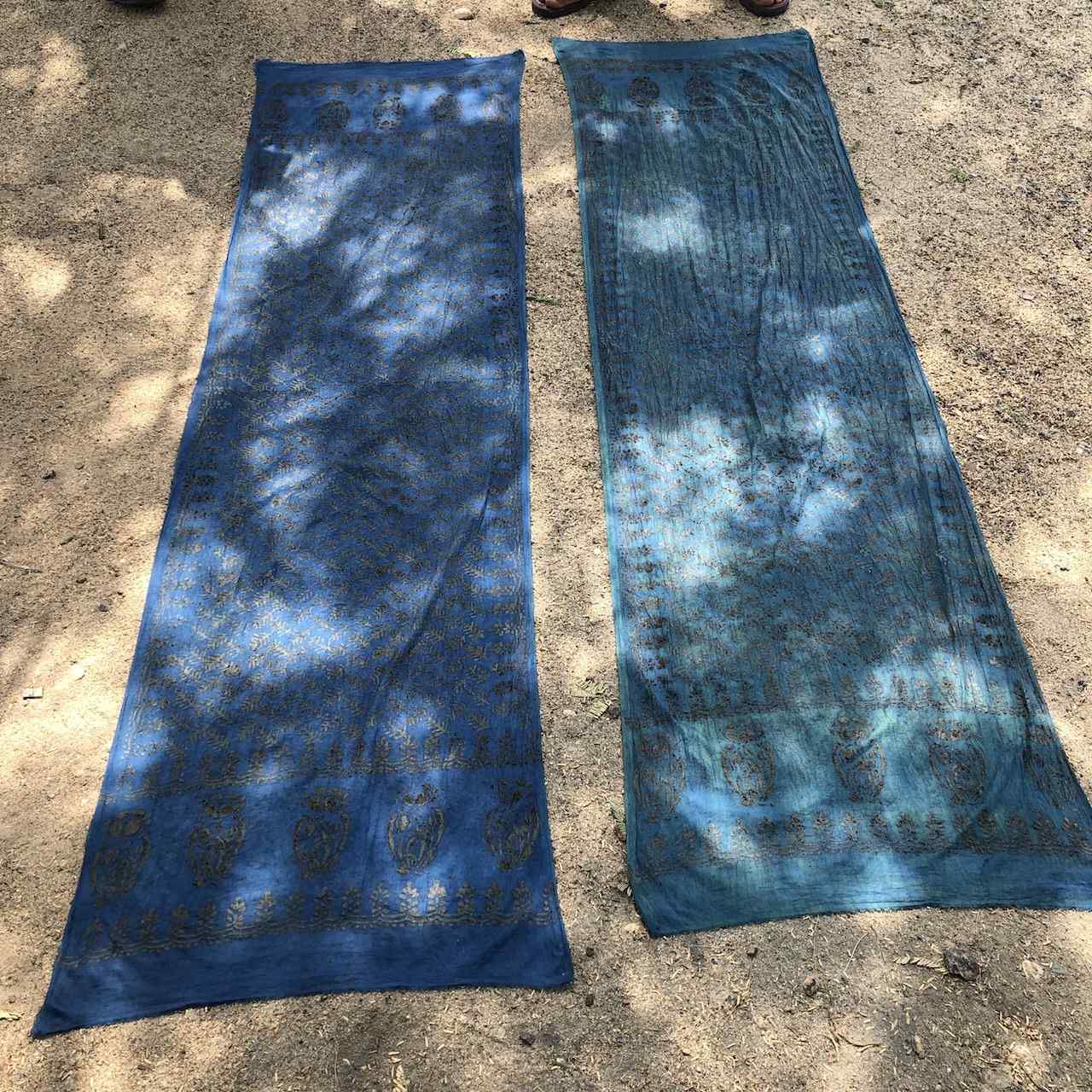
Here you can see how, within seconds the indigo changes colour, as it oxidises in the air, after being in the dye pit.
It's then left in the sun to dry & then given a vigorous wash, to remove the mud.
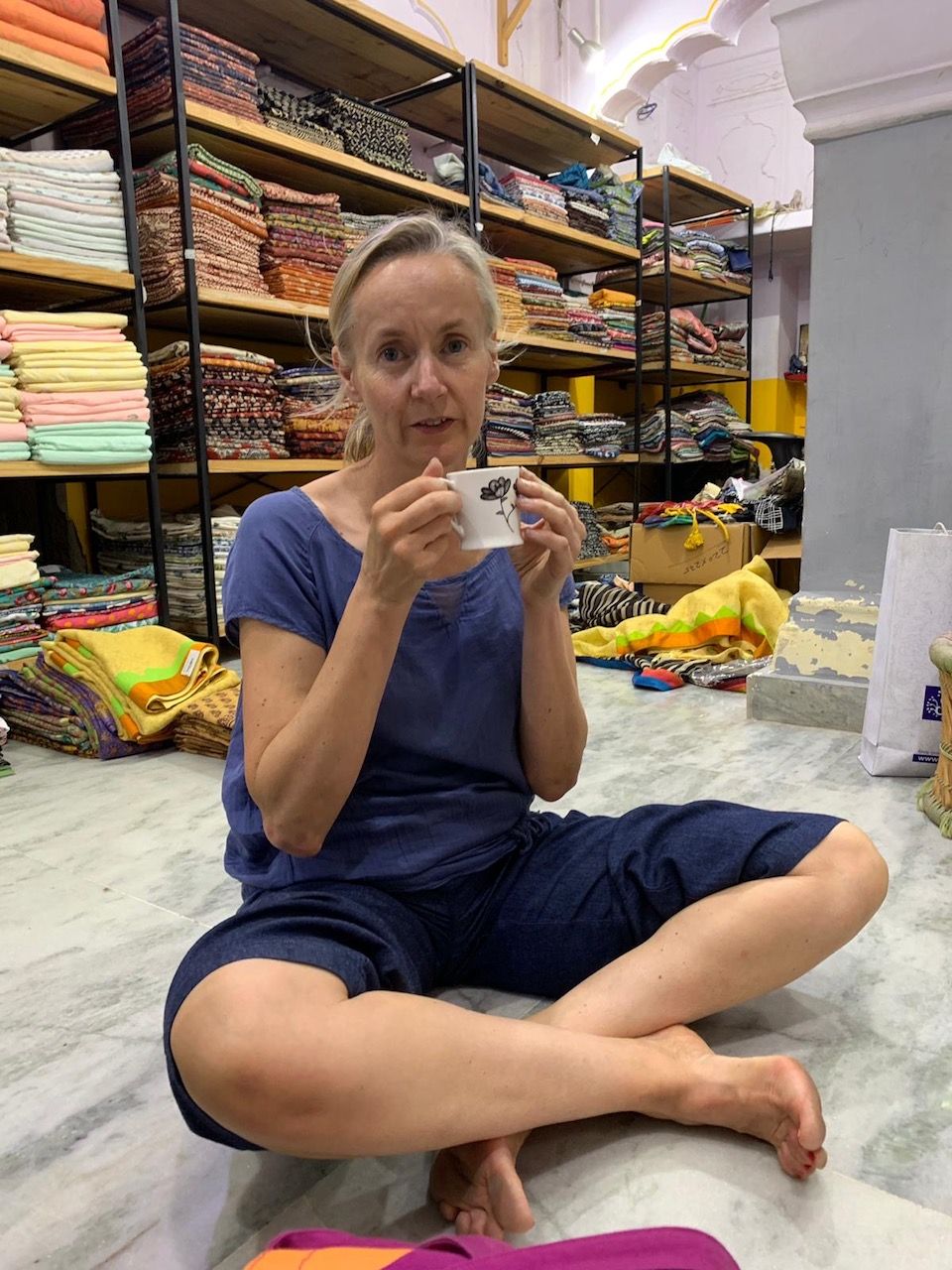
All that hot work, makes a girl thirsty, so after some Chai it was time for a bit of fabric shopping ;)
You can only see a tiny part of this fabric wholesalers, there were bales of fabric being sent around the world, from here. I am wearing my handmade Free Range Slacks, made from one of our lightweight denims, with the Sew House Seven pattern. A frequent look in my photos, as they were so cool, comfortable & have phone size pockets. They also could be washed in the hotel bathrooms & would dry over night! And yes, I did buy some fabrics!!

Next stop was a morning of sewing & lunch, spent with a gorgeous extended family, who quilt the block printed fabrics to create quilts and throws. Even with our lack of language skills, we had such a laugh, learning the skill of Kantha stitching, from speedy experts. Eventually, we managed to finish a piece of fabric, which was taken away whilst we sat eating yet more fabulous Indian food & returned after lunch as zip opening pillowcases!
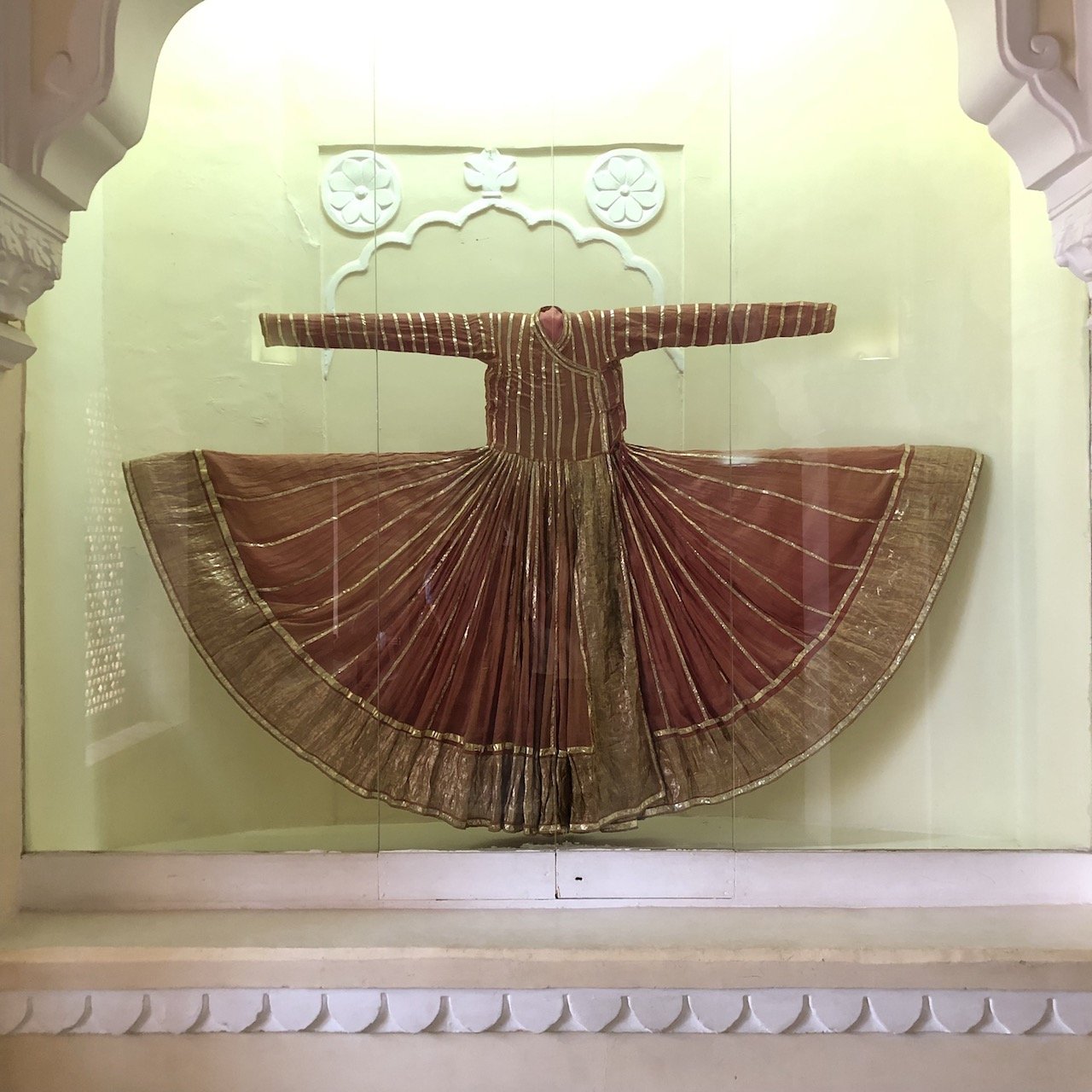
Off to the beautiful Mehrangarh Fort in Jodphur, which apart from featuring in the Batman Dark Knight Rises movie, houses a beautiful collection of textiles, worn by the inhabitants of the Fort. This outfit would have been worn by a male head of the clan. It was surprisingly small, but the detail & stitching was stunning.
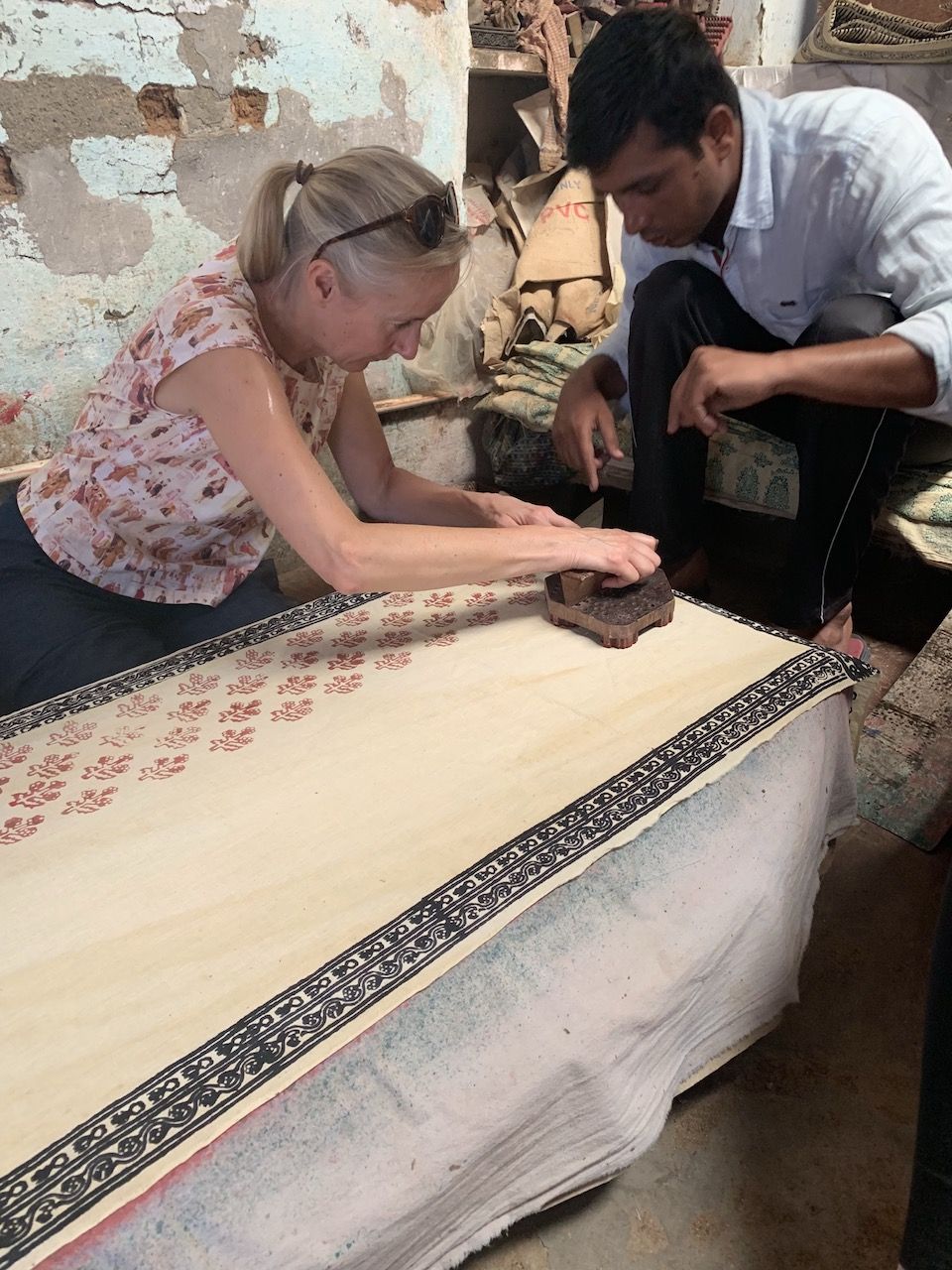 After a long drive we arrived in Balotra, a town known for its textile printing heritage. With a lovely welcome, we spent a morning with a family who still block print fabrics, where there was just a small amount of hand printing still taking place. Most of the printing had gone to huge screen printing factories, on the outside of town. Using 3 different patterned blocks & 2 colours, we printed dupatta scarfs, which were then indigo dyed & sent on to us.
After a long drive we arrived in Balotra, a town known for its textile printing heritage. With a lovely welcome, we spent a morning with a family who still block print fabrics, where there was just a small amount of hand printing still taking place. Most of the printing had gone to huge screen printing factories, on the outside of town. Using 3 different patterned blocks & 2 colours, we printed dupatta scarfs, which were then indigo dyed & sent on to us.
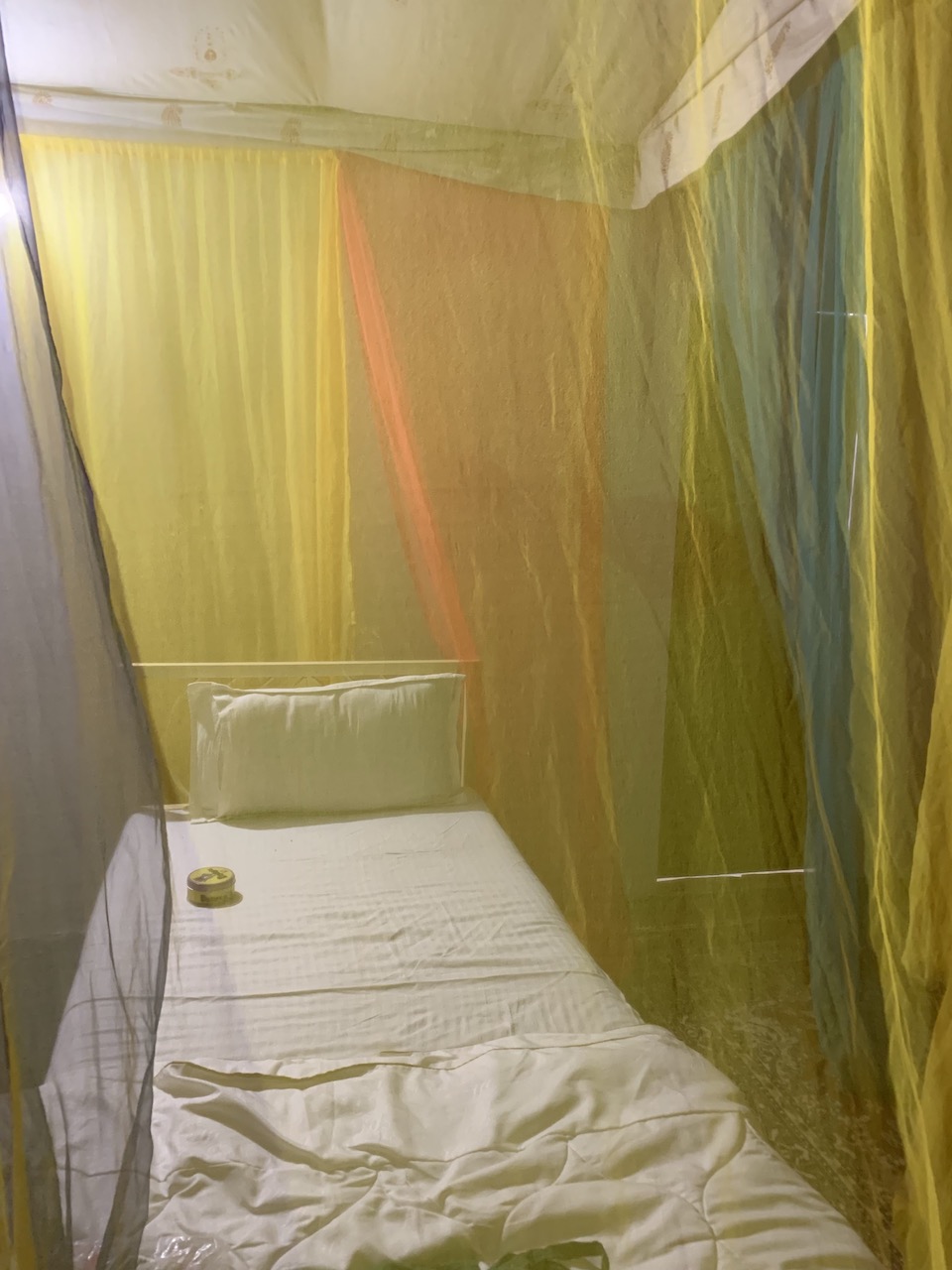
Now have a look at this night's accommodation & have a think where we might be sleeping...!
Answer in Part III ;)
